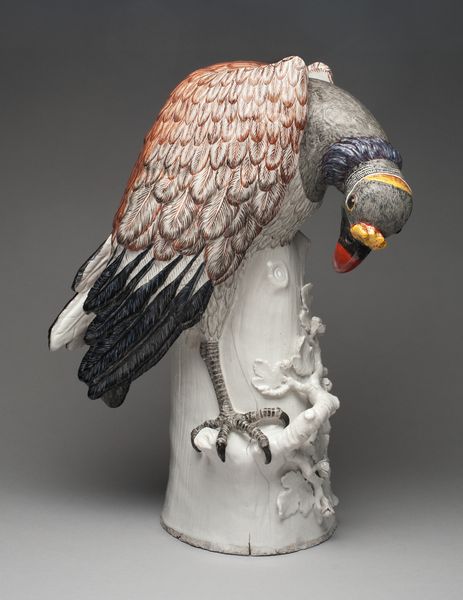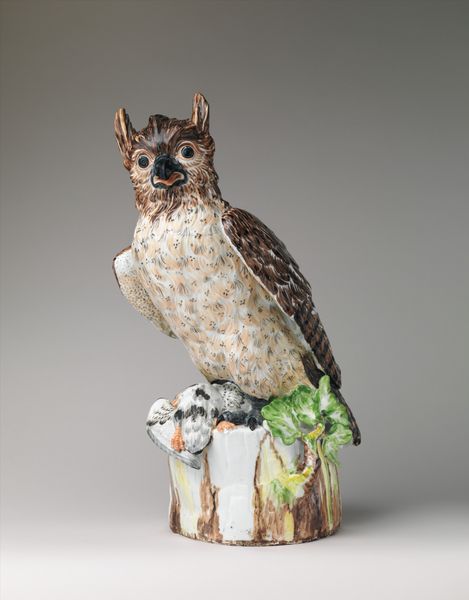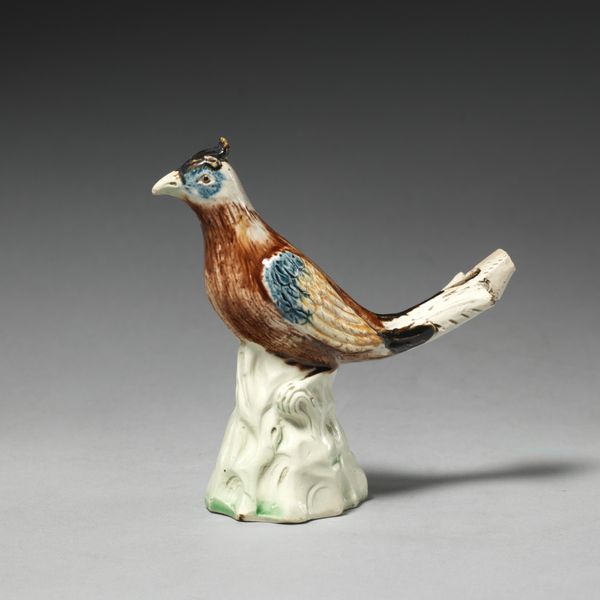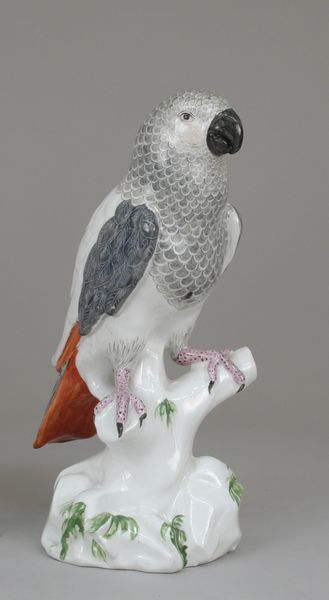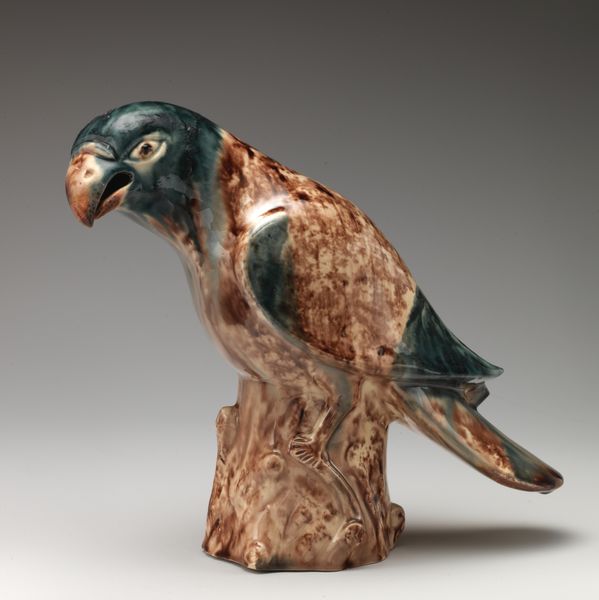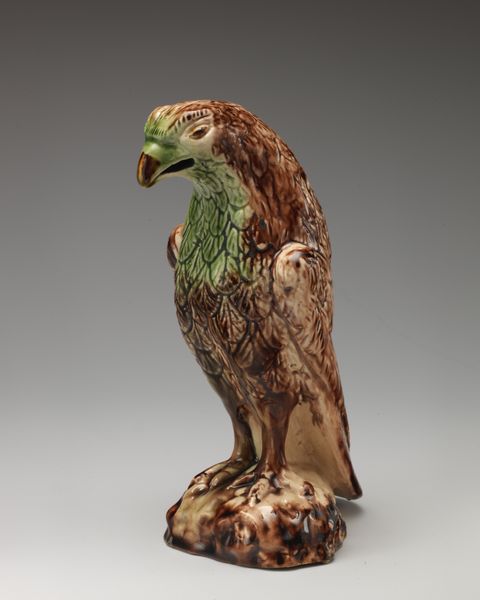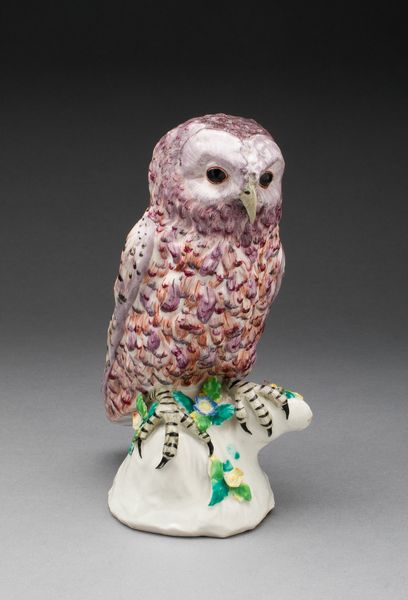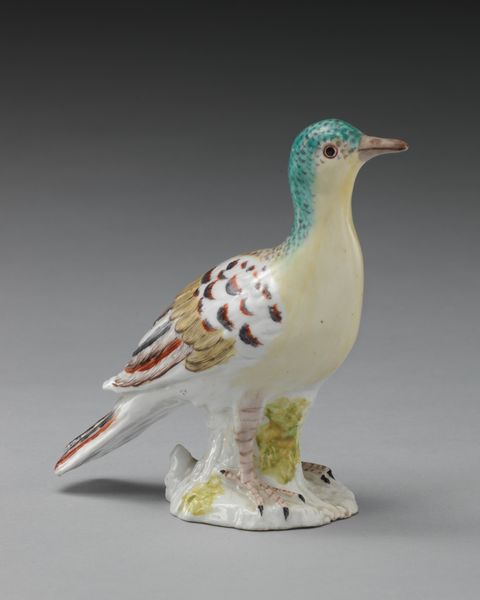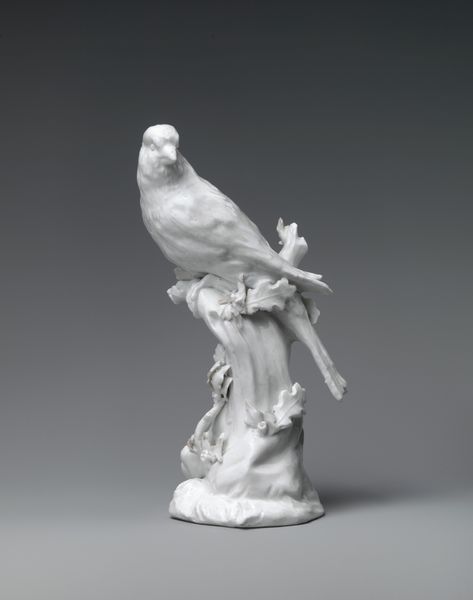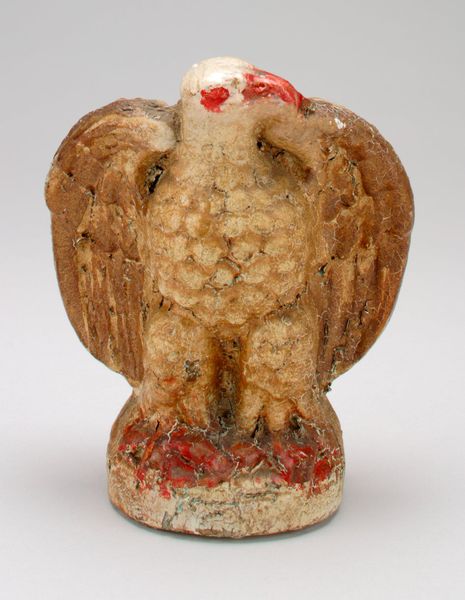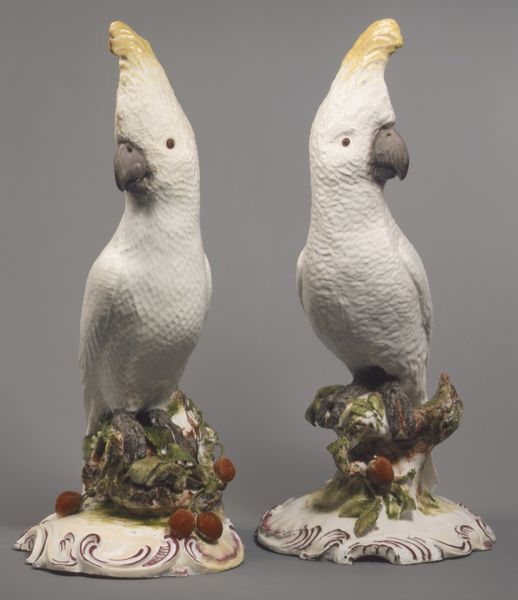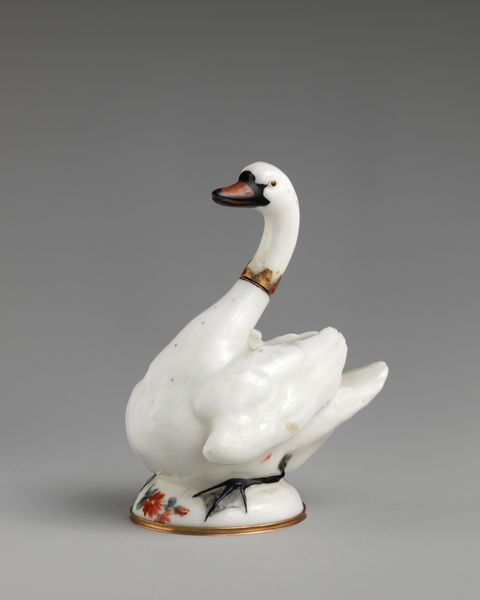
ceramic, porcelain, sculpture
#
baroque
#
animal
#
sculpture
#
ceramic
#
porcelain
#
sculpture
#
decorative-art
Dimensions: 22 3/8 × 8 3/8 × 11 1/8 in. (56.8 × 21.3 × 28.3 cm)
Copyright: Public Domain
Curator: The formidable "Eagle" is a porcelain sculpture crafted by the Meissen Manufactory between 1725 and 1735. It resides here at The Metropolitan Museum of Art. Editor: Its imposing size is striking. And that gleaming white porcelain gives it an almost spectral presence. Curator: These baroque sculptures must be considered within the social context of their time. They signify imperial power. These eagles, as one of a pair, would have been commissioned as luxury goods for wealthy patrons keen to display dominance through art. Editor: Absolutely. The eagle's intense gaze and raised wing – almost as if frozen mid-scream – suggest not just dominance but also the industrial labor it took to achieve the final polished and fired product. This smooth glazed finish involved a large division of specialist labour. Curator: It also invites questions regarding access and inequality in artistic production. Who did the labour of shaping this status symbol versus who had the luxury of beholding and owning it? Its symbolism is deeply embedded within the matrix of social relations of that period. Editor: Precisely. The very materials of the sculpture – the porcelain clay and the glaze, alongside their high firing temperatures, all point towards considerable skill and expense, restricting them only to certain class brackets. This form of avian Baroque flamboyance makes you question our modern day fetishization with fast cheap ceramics. Curator: Agreed. The "Eagle," while impressive, acts as a potent artifact embodying baroque art’s ties to hierarchies. Analyzing decorative art requires acknowledging those intricate political powerplays that underpin these supposedly neutral depictions of natural symbols. Editor: Ultimately, considering both the craft and the social elements at play reminds us that nothing is truly disconnected, particularly art. It prompts a reassessment of material ethics that hopefully can influence our own creative productions in the present.
Comments
No comments
Be the first to comment and join the conversation on the ultimate creative platform.

